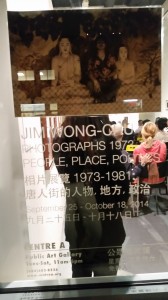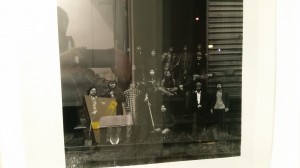Escape from Camp 14, the incredible story of survival from a slave death camp in Korea north by Shin Dong-Hyuk told by former Washing Post journalist Blaine Harden, was a story that never really escaped me since reading it. Spieglman’s Maus gave me another chance to look at this narrative from a different perspective, with attention to things like representation and voice.
Dong-Hyuk’s story is unique. Literally.
He is the only person to have escaped and told the story of the infamous slave death camps of Korea north that Kim’s junta categorically denies and UN absolutely confirms. People who are found guilty of crimes against the state (political and ideological crimes, including attempting to escape to China) are sent to concentration camps on forced labour. These harshness of these camps differ in range, and Camp 14 is one of the death camps where prisoners are sent for life. As a “reward” for good behaviour in these camps, inmates are “married” for several days a year. Shin Dong-Hyuk was born from one of these marriages, and his crime was inheriting the sins of his parents. He never talked to the father, and he fought his mother for food as soon as he could feel hunger. Children like Dong-Hyuk are forced into child labour until they can do adult labour at 14~16, if they manage to survive that long: they are slaves bred by the (member of UN) state. He meets an older political prisoner who came out at the wrong end of the endless purges who tells him about the world outside. Inspired by stories of barbequed meat (seriously) Dong-Hyuk escapes the camp, and luckily makes it out to China finding his way into Korea. Until he leaves the camp at age 22, the only food in his life was salted cabbage soup and coarse mixed grain. Field mice that he managed to catch was the only meat he ever tasted. (I saved the best parts, go read it)
Shin Dong-Hyuk originally wrote and published an autobiographical account almost immediately after arriving in Korea. However, his coarse penmanship and lack of understanding of, essentially, the fundamentals of scientific reasoning created a narrative that was not effective in communicating with the Korean audience. However, once Blaine Harden publishes a book based on interviews and consultations with Dong-Hyuk, it becomes a critical and commercial success. With the acclaim in North America, the Korean audience loved it too.
Shin Dong-Hyuk never went to school and is not a good orator. In ways, he is like Vladek. While Art is not a primary source in telling the story of the Holocaust, he might be the more effective source, just as the journalist Blaine Harden was able to be more effective. One thing Harden does is to give multiple accounts when there are contradicting stories in the interviews. Instead of making the story less credible, this allows for a better understanding of the greater picture as details become insignificant. However, a first-hand account cannot be guilty of presenting multiple accounts of a single event.
The authenticity of Shin’s story is sometimes challenged, especially as there is no one to verify it. There is one identified defected officer who worked at a concentration camp, although not a death camp like Camp 14, and he only saw/heard about these death camps on paper. Some critics argue that the authenticity of such traumatized individual cannot be used as grounds for political action. The media of Korea north vehemently denies the existence of these camps and accuses the American and Korean governments for propaganda. As a response, Shin, Harden and his supporters challenge Kim Jung-Eun to prove otherwise. Until then, his account stands. While this is a strange logic, somehow, it makes sense here.
Works cited:
Harden, Blaine. Escape from Camp 14: One Man’s Remarkable Odyssey from North Korea to Freedom in the West. New York: Viking, 2012. Print.

